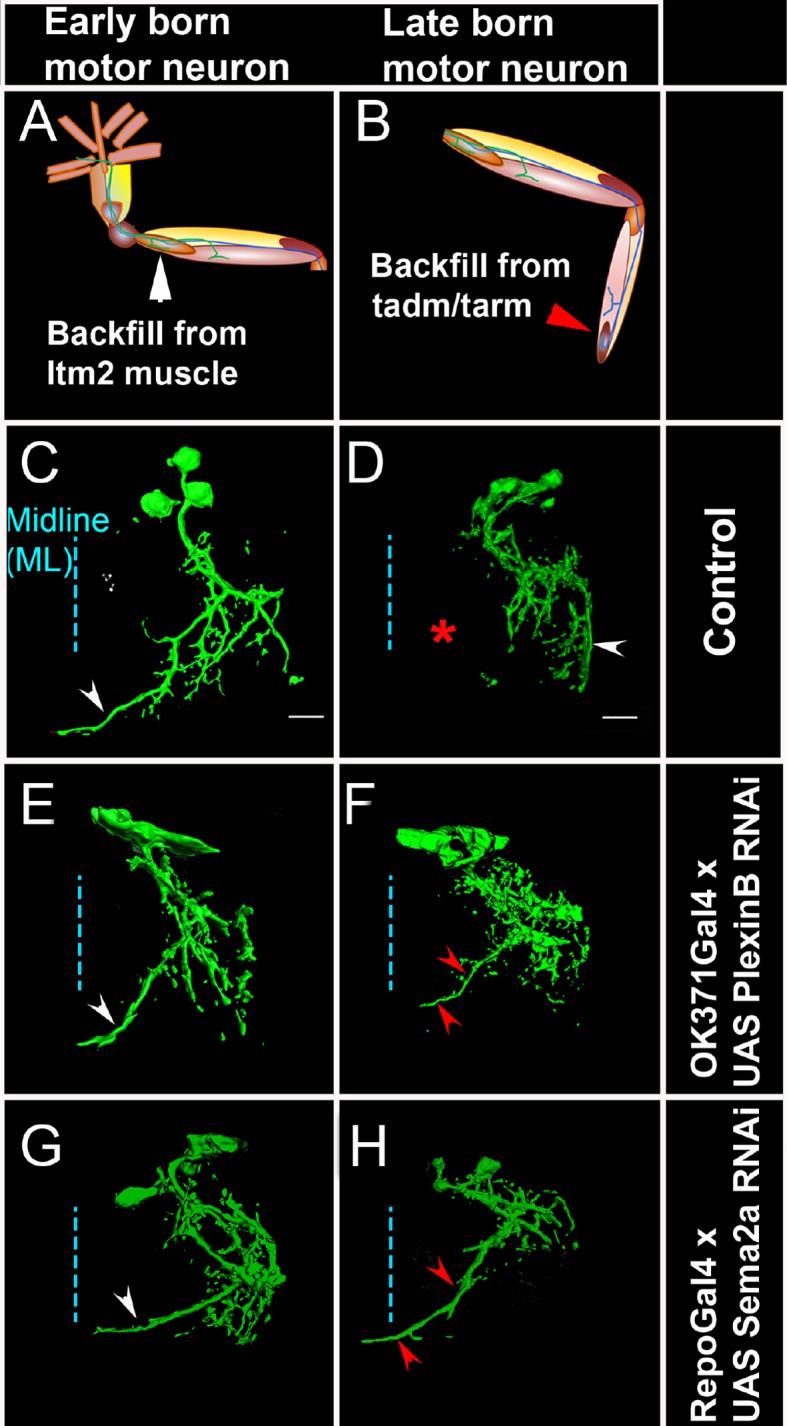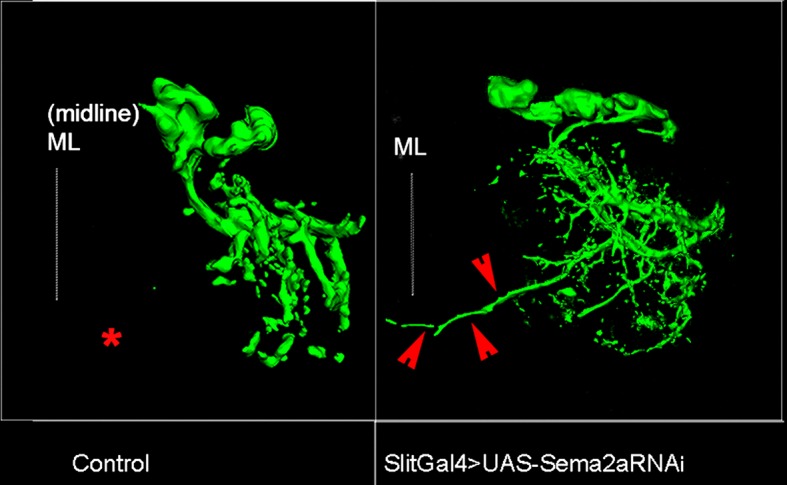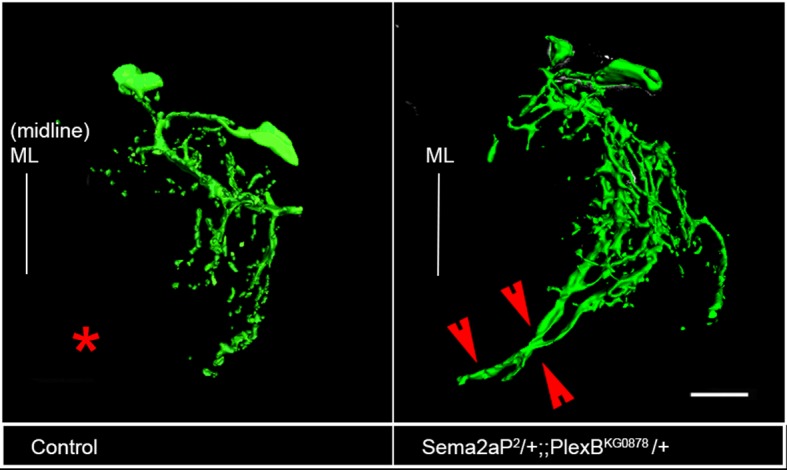Figure 6. PlexB and Sema2a are required for correct dendritic targeting of leg motoneurons.
Motoneuron dendrites in prothoracic hemiganglion labeled by dye backfilling from innervated muscles. (A, C, E, G) early born motoneurons that innervate ltm2. (B, D, F, H) late born motoneurons that innervate tadm. (A, B) Schematic representation of dye backfilled leg muscles. (C, D) Dendrites of motoneurons in wild-type control. (E, F) Dendrites of motoneurons following motoneuron-specific targeted knockdown of PlexB. (G, H) Dendrites of motoneurons following glial-cell-specific targeted knockdown of Sema2a. A dendritic mis-projection phenotype occurs in late-born motoneurons (F, H) but not in early-born motoneurons (E, G). White arrowhead indicates normal dendritic projection and red arrowhead indicates mis-projection. Red asterisk marks the region where projection is normally absent in late-born neurons. Scale bars =20 microns.

Figure 6—figure supplement 1. Sema2a secreted by midline cells is required for dendritic targeting of late-born motoneurons.

Figure 6—figure supplement 2. Plex B/Sema2a is required for correct dendritic targeting of late-born motoneurons.

